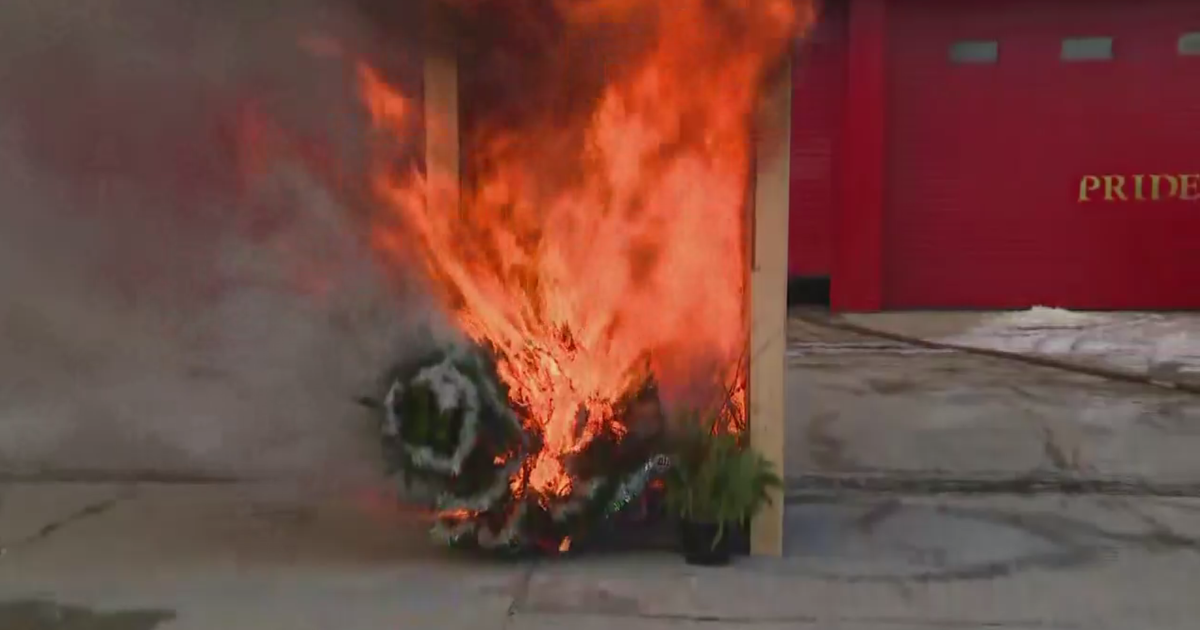New report shows extent of chemical release from Martinez refinery
MARTINEZ -- Bay Area air quality regulators have released a new report mapping the areas affected by a chemical release from a Martinez refinery and the results have prompted prosecutors to review the violations discovered for possible charges against the refinery.
It has been more than five months since people who live in parts of Martinez and Pacheco saw ash falling from the sky, only to learn days later that it was a release of hazardous materials from the Martinez Refining Company (MRC), formerly the Shell Oil refinery. Residents have been warned to not consume any produce grown in their yards in case of dangerous contamination.
On November 24, 2022, the refinery, which processes crude oil and other feedstocks to convert into gasoline, had a release of what it calls a "spent catalyst." MRC explains this is primarily alumina silicate, clay and other minerals mined from the earth. It is referred to as "spent" or "used" catalyst," as it has been incinerated at high temperatures to remove impurities so the catalyst can be reused.
MRC Incident Report on release of spent catalyst:
The Bay Area Air Quality Management District (BAAQMD) released a report Wednesday pinpointing exactly what parts of the community were impacted by the dust fallout. In December, the BAAQMD was tasked by Contra Costa Health Services (CCHS) to assess the catalyst release at MRC, after the health department received multiple inquiries from members of the public concerned about soil contamination in and around the City of Martinez.
The purpose of the air district's report was to provide a map solely for the county to use for its soil sampling program. To be clear, this map is not stating where residents are impacted by catalyst material. That will be determined later through toxicology done through the soil sampling of the areas of this map.
Summary Report: Mapping Dust Fallout from the November 2022 MartInez Refining Company Incident
CCHS has established a community oversight committee in response to the incident and the committee has requested a toxicologist to test the contaminated soil.
"The toxicologist the health department hired will use the plume model to help guide where to take soil samples and then have those samples analyzed for any health concerns," said CCHS spokesman Will Harper in a statement to KPIX. "We expect to have test results from the soil sampling in early summer."
Still, the report is a small piece in the search for answers for so many people who just want to feel safe in their own backyards.
"This was going to be our big garden and I was going to have all kinds of tomatoes and zucchini and cucumbers and all kinds of stuff," said Martinez resident Heidi Taylor.
Taylor moved into her new Martinez house just last summer and created a space for a vibrant garden in her backyard. But now, Taylor and her other neighbors in the area are being told to not consume anything grown in their yards.
"The tomato is probably seriously poisonous tomatoes," said Taylor. "I am afraid to touch it, honestly."
Residents said the overnight release of the catalyst left every surface covered with what looked like a white ash.
"It was everywhere. It was on our trash, it was on the house, it's on our plants," recalled Taylor. "And it's this white ash and it just aerosolized and went everywhere. And I just think about it and it freaks me out."
The release of the spent catalyst began at 9:30 p.m. and lasted for hours until early the next morning. To make things even more concerning, no one was alerted about it.
"All the while we knew nothing about this, we thought it was chimney soot," explained Taylor.
The county has a Community Warning System in place for that very reason; residents should have gotten texts, phone calls, and emails. However, it was not used because MRC did not immediately alert the county health department or the sheriff's office about the leak.
"If they are going to be my neighbor, then they have to have safety, they have to communicate with us and let us know what is going on," said Taylor. "If they had told us about that release, we could have stayed inside. We could have taken the proper precautions. But they didn't say anything, that is the problem."
Industrial facilities such as MRC are required by state law to notify authorities within 15 minutes of situations like this. It was not until two days after the release that the health department saw what happened by people posting about it on social media. CCHS then ran tests that found higher-than-normal amounts of heavy metals.
"And then later when the results came back from the county health's testing, the wipes of the test and informing us of all the heavy metals in it, that's when I got really scared," said Taylor. "You have to remember, 'What did I eat? What did I touch? What did I breathe?' All of these questions are still outstanding. We don't have answers to any of those questions. It is unnerving."
Following initial testing, CCHS reported it did not believe there was an immediate health risk. However, exposure to high concentrations over a long period of time could cause more serious health problems, according to Contra Costa County Public Health Officer Dr. Ori Tzvieli.
"I think there is serious concern about the refinery's reaction in the days and hours after this happened. Had we been notified at the time we would have taken every measure we could to prevent people inhaling this toxic dust. Unfortunately, we weren't informed until a few days later," said Tzvieli. "And we only found out on social media. So we couldn't take those steps which would normally take in that scenario. As far as inhalation, the concern is really around a couple of metals, nickel, zinc, and you know, there's some concern about long-term carcinogenesis. Or some concern about effects on the immune system."
The CCHS oversight committee will be meeting again to review the ash plume modeling results from BAAQMD on Thursday.
"For many people, people want answers and they want them now they want to know what's in their yard and that's very reasonable and understandable," said Tzvieli. "We want to do this right. And part of it is understanding exactly where the dust went. Because we were not informed initially. You know, we are having to piece together what happened after the fact."
"As it gets further and further, and more information is known, it is horrific," said Taylor. "I just can't fathom that. And not knowing what that means for us, it is just very scary."
The Contra Costa County District Attorney's Office told KPIX that it was reviewing this case for two violations: failing to report a release or threatened release of hazardous material and releasing illicit discharges to the county's stormwater system. It could take several months for the district attorney's office to reach a charging decision.
KPIX reached out to the Martinez Refining Company when originally filing this report in March. Representatives from MRC declined an on-camera interview but answered our questions via email referring us to their original Incident Report. After Wednesday's release of the BAAQMD report, KPIX requested a statement from MRC, to which they responded by referencing the report they sent in March.







